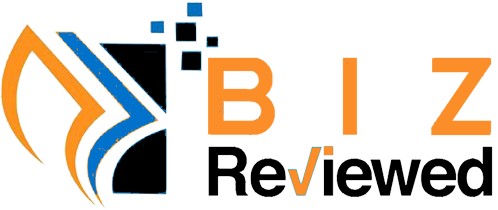Introduction: What is Zoswerheoi?
In the fast-evolving world of technology and digital transformation, Zoswerheoi has emerged as a promising term gaining traction across tech communities and industries. Though the term may seem unfamiliar, it represents a broader movement towards integrated digital solutions, automation, and intelligent platforms that adapt to user needs. This article will provide a deep dive into what Zoswerheoi is, its potential applications, and why it might be the next big shift in how businesses and systems operate globally.
The Origins and Meaning of Zoswerheoi
While Zoswerheoi might not yet be a widely recognized term, its essence is rooted in next-generation computing, data integration, and adaptive technologies. It combines artificial intelligence, cloud infrastructure, and real-time analytics to create seamless ecosystems that can learn, react, and optimize processes on the go.
Think of Zoswerheoi as a bridge between disparate technologies—helping everything from smart homes and e-commerce to financial services and healthcare become more efficient, predictive, and user-friendly.
Key Features of the Zoswerheoi System
1. Unified Data Infrastructure
At the core of Zoswerheoi is a unified approach to data. It breaks down traditional data silos, ensuring that different departments, tools, and platforms can access and interpret data uniformly. This reduces duplication, enhances decision-making, and improves operational visibility.
2. Intelligent Automation
Another standout feature of Zoswerheoi is intelligent automation. Unlike basic automation tools, Zoswerheoi systems are capable of learning from user behaviors, identifying anomalies, and automating responses. This significantly reduces manual intervention and operational overhead.
3. Scalability and Flexibility
Scalability is crucial in today’s fast-paced environment. Zoswerheoi platforms are built to adapt—whether you’re managing a small startup or a global enterprise. The flexible infrastructure can accommodate rapid growth, changes in user demand, and emerging technologies with ease.
How Zoswerheoi Is Transforming Industries
Zoswerheoi in Healthcare
In healthcare, helps bridge patient data across various platforms—EMRs, diagnostic tools, insurance systems—providing a 360-degree view of patient health. AI-powered recommendations, appointment automation, and remote diagnostics are just some ways Zoswerheoi improves patient outcomes.
Zoswerheoi in E-Commerce
Retailers can use Zoswerheoi to enhance customer experience through personalized product recommendations, inventory management, and dynamic pricing. By analyzing customer behavior in real-time, businesses can optimize their strategies for maximum engagement and ROI.
Zoswerheoi in Finance
In the finance sector, plays a role in fraud detection, risk assessment, and portfolio management. The platform’s ability to analyze vast volumes of financial data in seconds leads to faster, more accurate decisions.
Advantages of Zoswerheoi for Businesses
Enhanced Efficiency
With Zoswerheoi, businesses can streamline operations, automate repetitive tasks, and minimize errors. This not only saves time but also reduces operational costs.
Improved Customer Experience
By integrating multiple data points and using predictive analysis, delivers personalized experiences for users. Whether it’s a chatbot resolving queries or a shopping site curating product suggestions, the platform keeps customer satisfaction at the forefront.
Data-Driven Decision Making
The real-time data analytics capabilities help businesses make informed, strategic decisions. By understanding trends, customer behavior, and operational bottlenecks, leaders can take action faster and more effectively.
Challenges and Considerations in Implementing Zoswerheoi
Data Privacy and Security
As with any technology that involves data collection and analysis, must address user privacy and regulatory compliance. Businesses need robust data governance policies to ensure they use the platform ethically and securely.
Integration Complexity
Deploying might require businesses to overhaul legacy systems. This can be costly and time-consuming. Proper planning, training, and phased integration are crucial to success.
Ongoing Maintenance and Updates
Zoswerheoi-based systems require regular updates, patches, and optimizations to remain effective. This necessitates dedicated IT resources and long-term support strategies.
Zoswerheoi vs Traditional Systems: A Comparison
| Feature | Zoswerheoi | Traditional Systems |
|---|---|---|
| Data Handling | Real-time, Integrated | Siloed, Manual |
| User Experience | Personalized, Adaptive | Generic, Static |
| Automation | AI-Driven, Smart Processes | Rule-Based, Limited |
| Scalability | High, Cloud-Based | Moderate, Hardware Dependent |
| Cost Efficiency | Long-Term Savings | Higher Long-Term Costs |
Future Outlook
AI Integration
Future Zoswerheoi platforms are expected to harness advanced machine learning and natural language processing to improve contextual understanding and user interaction.
Global Adoption
As more businesses look for ways to digitally transform their operations, could become a global standard. Open-source communities and developers are likely to contribute to its evolution.
Industry-Specific Applications
We may soon see branching into specialized versions tailored for industries like agriculture, education, and logistics. These tailored solutions will further increase its value proposition.
How to Get Started
If you’re a business owner or tech leader interested in adopting, here’s a simple roadmap:
-
Evaluate Your Current Infrastructure – Identify where integration and automation are needed most.
-
Select the Right Tools – Choose Zoswerheoi-enabled platforms that suit your business model.
-
Start Small, Scale Fast – Begin with a pilot program or one department before company-wide implementation.
-
Train Your Team – Ensure your staff understands the benefits and operations of systems.
-
Monitor & Optimize – Use performance metrics to track efficiency gains and identify areas for improvement.
Conclusion
Zoswerheoi is not just a buzzword—it represents a forward-thinking shift in how businesses manage data, automate workflows, and engage with customers. While still gaining recognition, its principles of integration, intelligence, and adaptability are becoming essential in today’s digital-first world.
For companies seeking to remain competitive, exploring what has to offer could be the strategic move that drives long-term success. With careful planning, the right tools, and a focus on innovation, can lead the charge in shaping smarter, more connected systems.






